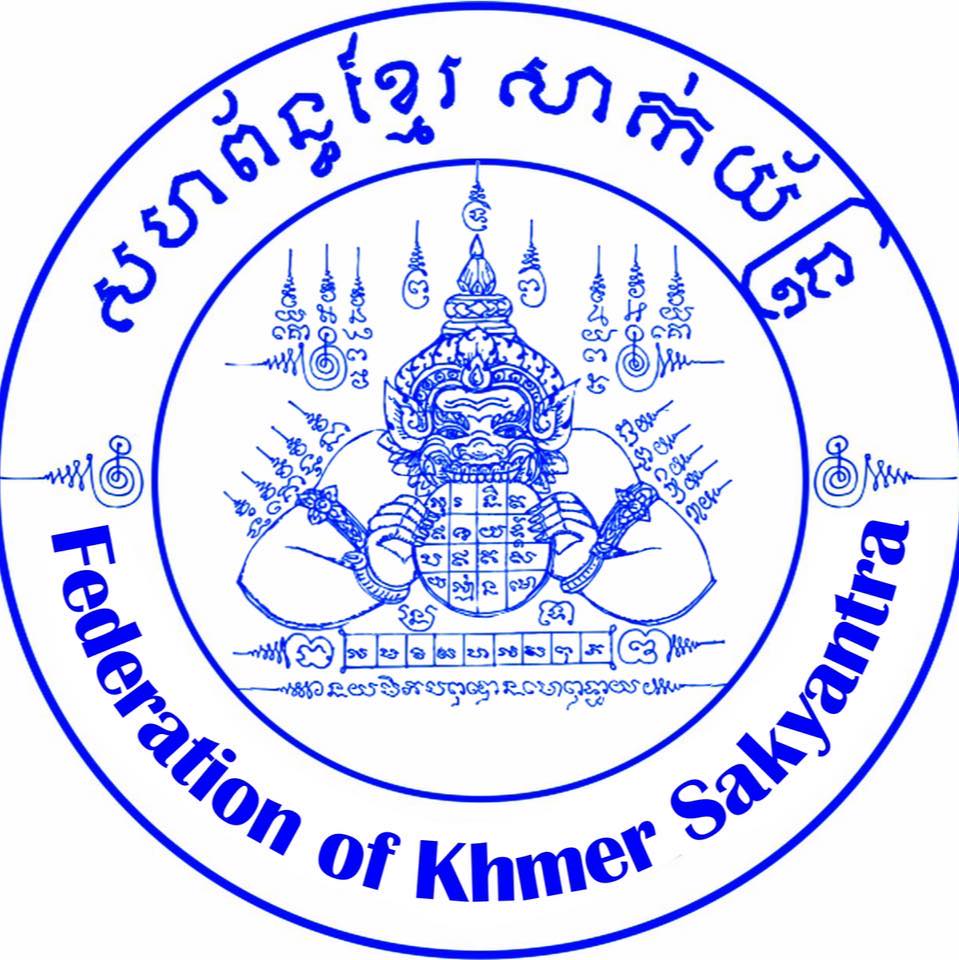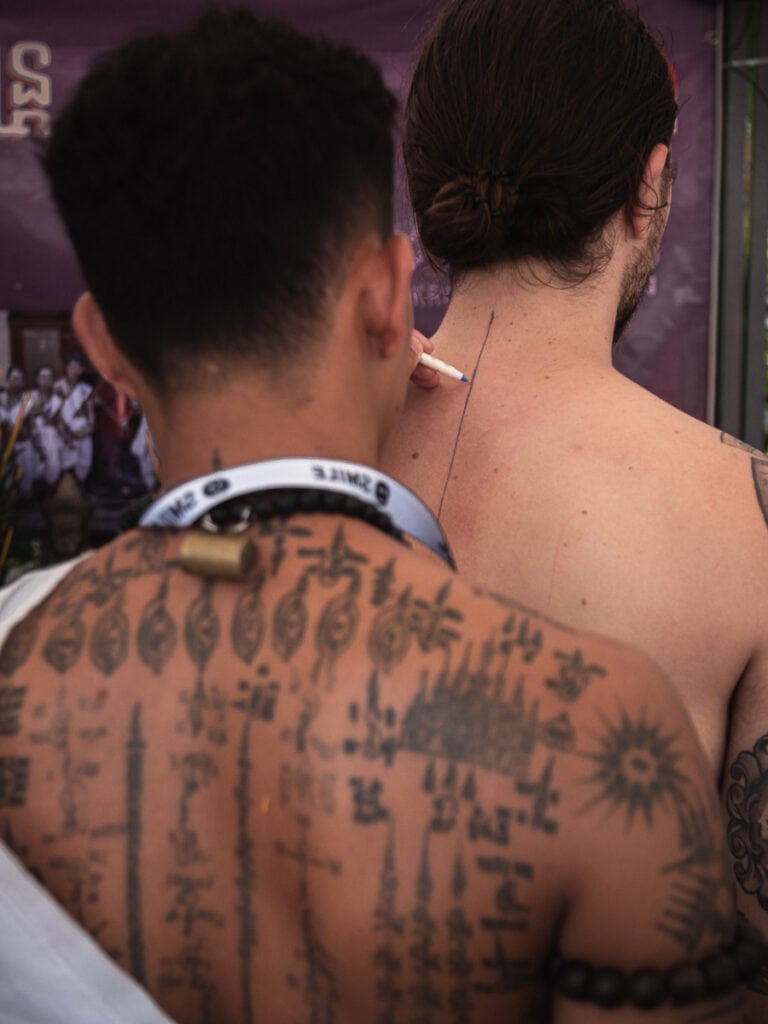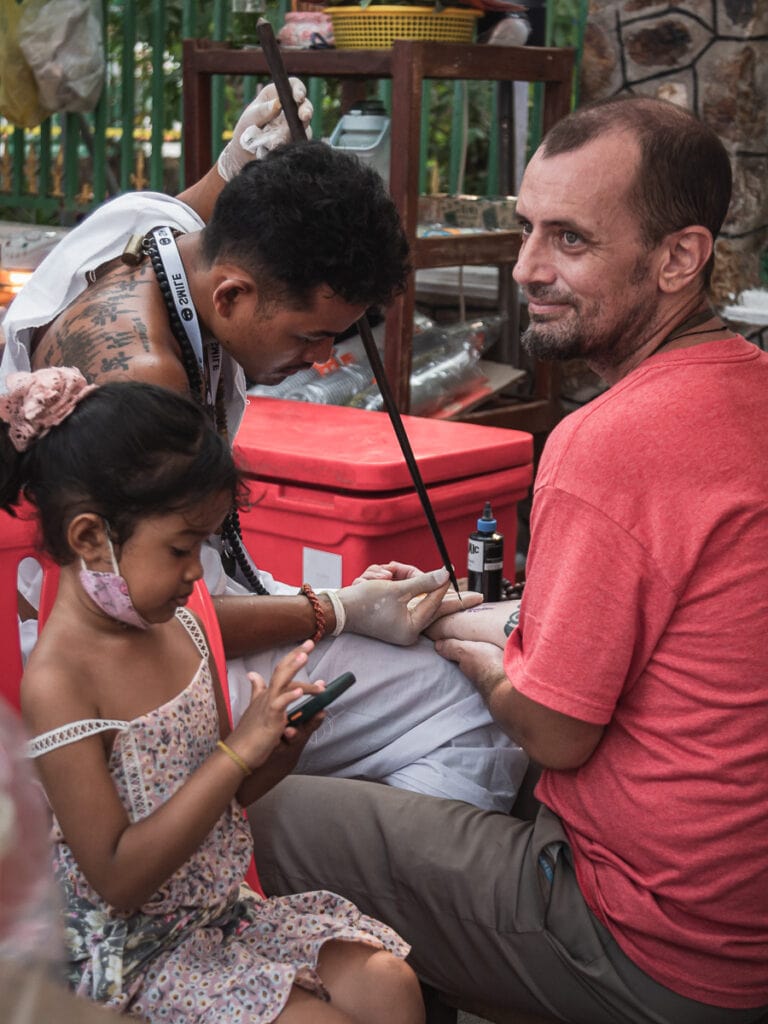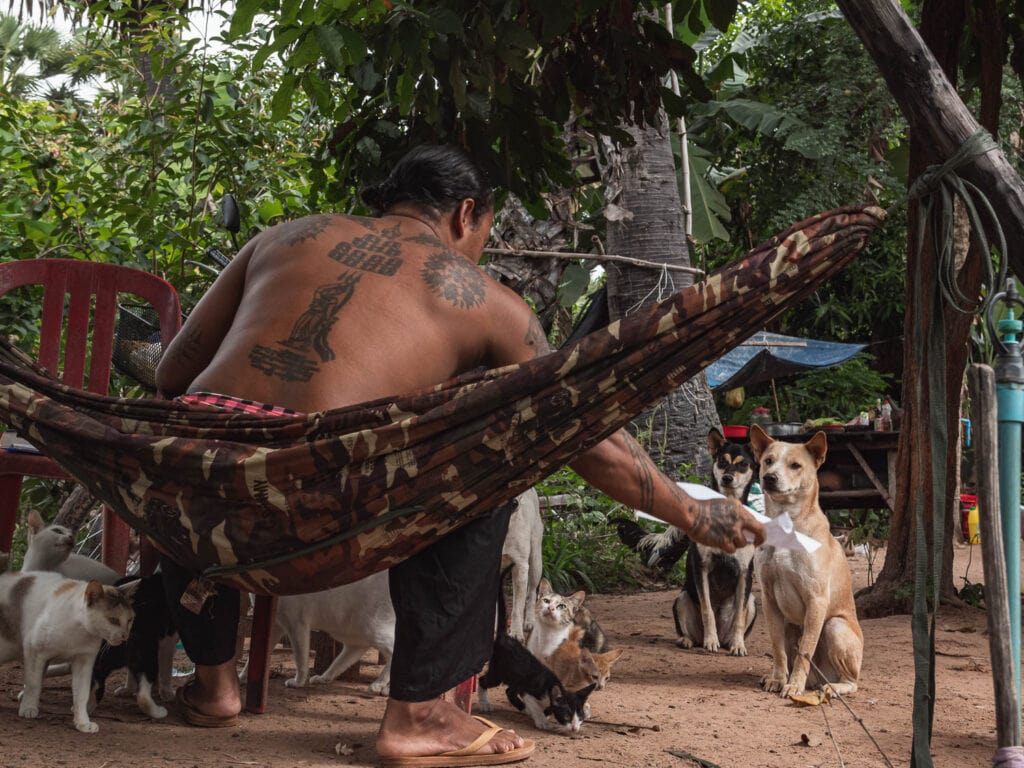
Sombath Sakk has been a Sak Yant artist for almost 10 years. He is a member of Federation Khmer Sak Yant, an association of practitioners, students, teachers and masters who are dedicated to the practice and preservation of unique Khmer spiritual and martial arts traditions.











